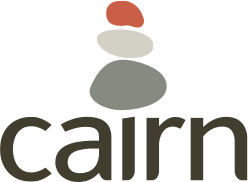Many educators across our country can understand the weight of having to manage academic, emotional, physical, and social development within their classrooms. Implementing curriculums and changing a school‘s culture can be a daunting task, but Shine Light on Depression can be used to fill in the gap. Tim Johnson, MSW is the Behavioral Health Services Coordinator for Des Moines Public Schools in Des Moines Iowa. In this role, he supports initiatives that create school environments that Read ▸ about Breaking Down Barriers to Spread Awareness Around Mental Health for School-aged Children and Adults.
Whole School, Whole Community, Whole Child
Why I Became an Educator
By Antionette Meeks of Cairn Guidance, a Dove Self-Esteem Project Partner I loved to teach. I loved to see my students learn. I enjoyed seeing their faces light up and their eyes sparkle when they would grasp a new concept, share an opinion, or participate in small or large group activities. I celebrated with them as they enthusiastically shared about an event or accomplishment outside of school. When we laughed together, it could be quite the bonding moment. When they suffered a personal Read ▸ about Why I Became an Educator
Upcoming 2023 Fall Events and Opportunities!
The Cairn Guidance team is very excited to share a variety of training events and opportunities this Fall. As always, please reach out if you have any questions. Deep Dives into the Health Education Standards This week is the last opportunity to sign up for this awesome training series, starting on Monday, October 2, 2023. We have offered this multiple times for clients and opened it up to others around the country! We will be co-facilitating this with RMC Health. Each of the eight Read ▸ about Upcoming 2023 Fall Events and Opportunities!
Blaze Approach Components at Work!
Our role is to blaze a path to student success as guides for schools and community partners to implement the Whole School, Whole Community, Whole Child (WSCC) approach. We share a common goal with school, family and community stakeholders to ensure that each student is healthy, safe, engaged, supported, and challenged to achieve their full potential. Over the last 4 years, we have been working with the Kentucky Department of Education on their 1801, Improving Student Health and Academic Read ▸ about Blaze Approach Components at Work!
Introducing… Blaze Approach!
We share a common goal: ensuring each student is healthy, safe, engaged, supported, and challenged to achieve their full potential. But the path to implementing the Whole School, Whole Community, Whole Child (WSCC) approach can be challenging–that’s where we come in. Cairn Guidance has developed their facilitated journey to support schools and districts implementing a Coordinated School Health Approach, also called the Whole School, Whole Community, Whole Child framework. Blaze Approach Read ▸ about Introducing… Blaze Approach!
Core Capacity for Focusing on the Whole Child
When we talk about what schools might do during and even after a pandemic to shift our thinking and prioritize the health and well-being of our kids and staff, I’d suggest considering the pieces I see as core capacity activities. I’ve described these core capacity pieces below. Stay tuned for a public launch of our new product, called Blaze Approach in which we offer support (professional development and technical assistance) in these areas below, to schools, districts and Departments of Read ▸ about Core Capacity for Focusing on the Whole Child
Sustaining Healthy Schools beyond COVID
Written by guest blogger, Michelle Rawcliffe (a middle school teacher in Woodstock CT) “This is the time for the mental health staff (counselors, social workers and psychologists), health services staff (school-based health centers and school nurses), Health Educators, Physical Educators, Staff Wellness Leads (HR), Nutrition Services, Custodians & Facilities Managers to assess and work collaboratively on the physical and emotional safety of the school environment.” Read ▸ about Sustaining Healthy Schools beyond COVID
Supporting Trans and Gender Non-Conforming Students with Pride (ASCD Webinar)
Super glad I was on ASCD’s webinar today on supporting transgender and gender non-conforming students in schools. It was great to see people sharing where they were joining in from in the group chat - from all over the world!Two speakers led the webinar- Becca Mui from GLSEN and Vanessa Ford, a Board member of the National Center for Transgender Equality. They started by defining key terms to get everyone on the same page. Read ▸ about Supporting Trans and Gender Non-Conforming Students with Pride (ASCD Webinar)
